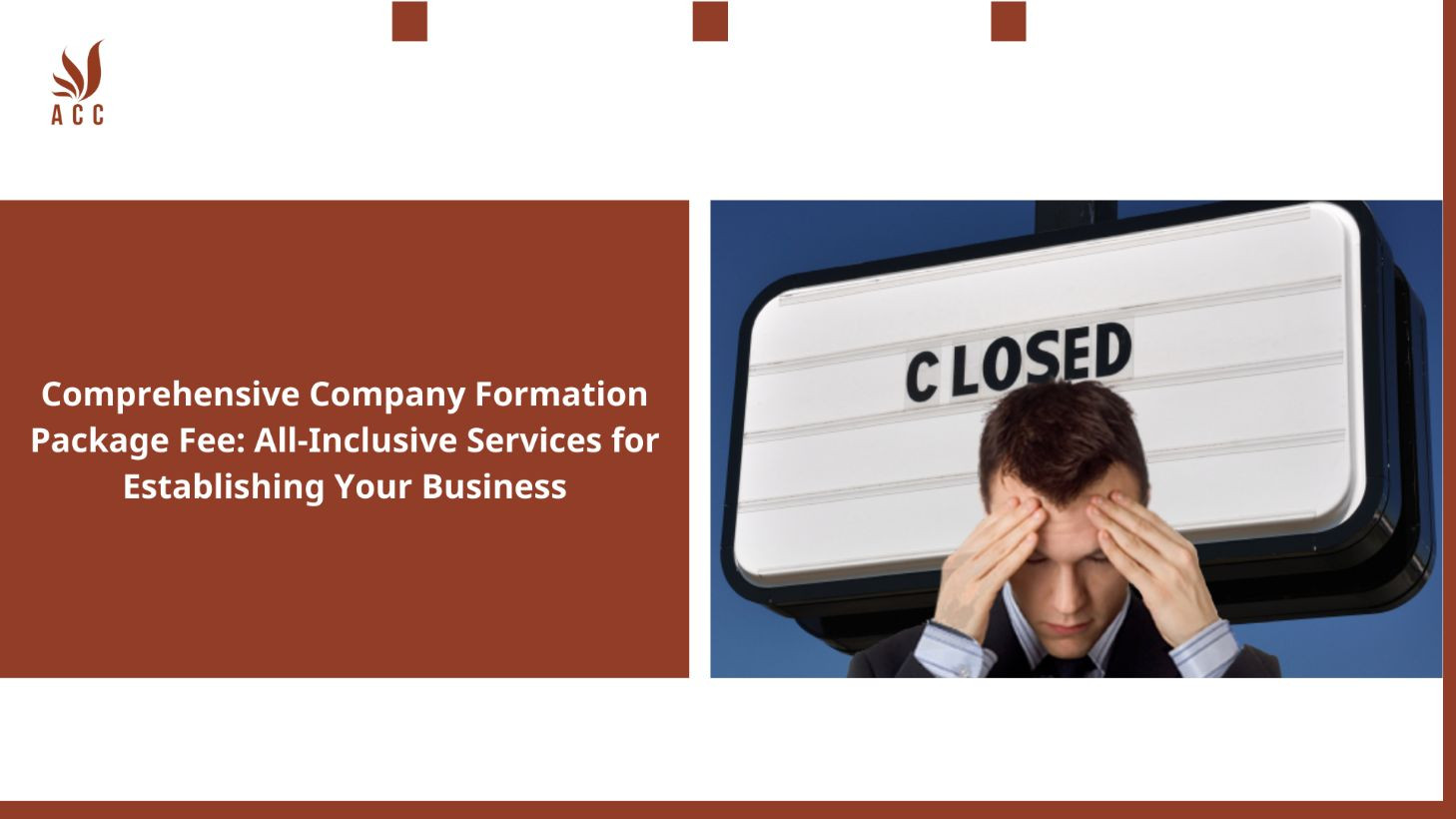Setting up a company is an exciting venture, but it comes with a price tag that entrepreneurs need to navigate. In this article, we'll delve into the intricacies of company setup fees, exploring the various costs involved and offering insights on how to optimize expenses.

1. Types of Company Setup Fees
Registration fees
One of the primary costs when establishing a company is the registration fee. This amount varies based on the business structure and jurisdiction.
Licensing fees
Certain industries require specific licenses, each coming with its own set of fees. Understanding these beforehand is crucial for budgeting.
Legal fees
Navigating the legal landscape involves costs related to documentation, contracts, and intellectual property filings.
Operational fees
Beyond the initial setup, operational fees cover ongoing compliance, renewals, and adapting to regulatory changes.
2. Factors Influencing Company Setup Fees
Understanding the factors influencing setup fees is vital for accurate budgeting.
Jurisdictional regulations
Different regions have varying regulatory landscapes, impacting the overall cost of setting up a company.
Business structure
The type of business structure chosen significantly influences the associated setup expenses.
Industry-specific requirements
Certain industries have unique demands, translating into specific setup costs for compliance and licensing.
3. Hidden Costs in Company Setup
Entrepreneurs must be aware of potential hidden costs that can impact their budget.
Compliance costs
Ongoing compliance requirements can add up, including annual reports, renewals, and unexpected regulatory changes.
Professional consultancy fees
Engaging professionals for legal or financial advice incurs additional fees that might not be initially apparent.
Unexpected regulatory charges
Changes in regulations may lead to unforeseen costs, emphasizing the need for flexibility in budgeting.
4. Strategies to Minimize Setup Costs
Entrepreneurs can adopt strategies to mitigate company setup expenses.
DIY vs. professional assistance
Choosing between a do-it-yourself approach and professional assistance can significantly impact costs.
Negotiating fees
Engaging in negotiations with service providers and consultants can lead to cost savings.
Leveraging online resources
Utilizing online platforms and resources can provide cost-effective solutions for various aspects of company setup.
5. Comparative Analysis of Setup Fees
Explore how setup costs vary across different industries and regions, offering a comprehensive understanding of the financial landscape.
6. Understanding Legal Documentation Costs
Delve into the costs associated with legal documentation, including contracts, agreements, and intellectual property filings.
Contracts and agreements
The creation and review of contracts involve legal fees that entrepreneurs should account for in their budget.
Intellectual property filings
Protecting intellectual property requires additional expenditures, contributing to the overall legal documentation costs.
7. Impact of Company Size on Setup Fees
Company size plays a crucial role in determining setup expenses.
Small businesses vs. large enterprises
Smaller enterprises may have different cost structures compared to larger corporations when it comes to setting up.
8. Regional Disparities in Company Setup Fees
Explore how the geographical location of a business impacts the overall setup costs.
Variances in regulatory requirements
Different regions have diverse regulatory landscapes, influencing the cost of compliance and licensing. Local government charges may add an extra layer of complexity to the overall setup expenses. Understand the intricacies and costs associated with tax registration and ongoing compliance.
Federal and state tax obligations
Different tax obligations exist at the federal and state levels, each carrying its own set of associated fees. Prepare for ongoing compliance-related expenses to ensure the long-term sustainability of the business.
Factor in the costs of annual reports, renewals, and other compliance-related obligations. Stay informed about regulatory changes that may impact the company, leading to additional compliance costs.
9. Common Misconceptions about Setup Fees
Dispelling myths and clarifying common misconceptions surrounding company setup costs. Tailor setup cost expectations based on the unique requirements of the industry in which the business operates. Explore real-world examples of companies effectively managing setup costs, providing practical insights for entrepreneurs.
10. Conclusion
In conclusion, navigating the realm of company setup fees requires a thorough understanding of the various costs involved. Entrepreneurs should approach this process with flexibility, considering the dynamic nature of regulatory landscapes and industry-specific demands.
FAQs
-
Q: Can I handle the company setup process on my own to save costs?
- A: While a DIY approach is possible, it's essential to weigh the complexity of tasks against potential savings. Professional assistance may be warranted in certain aspects.
-
Q: Are there ways to negotiate setup fees with service providers?
- A: Yes, negotiating fees is a common practice. It's advisable to discuss costs with service providers and explore potential discounts or payment plans.
-
How can technology assist in the resolution-setting process?
- Technology can streamline the process, offering tools for collaboration and resolution management.
-
Is seeking professional assistance necessary for every company?
- While not mandatory, professional assistance can be beneficial, especially for complex resolutions.
Nội dung bài viết:






Bình luận